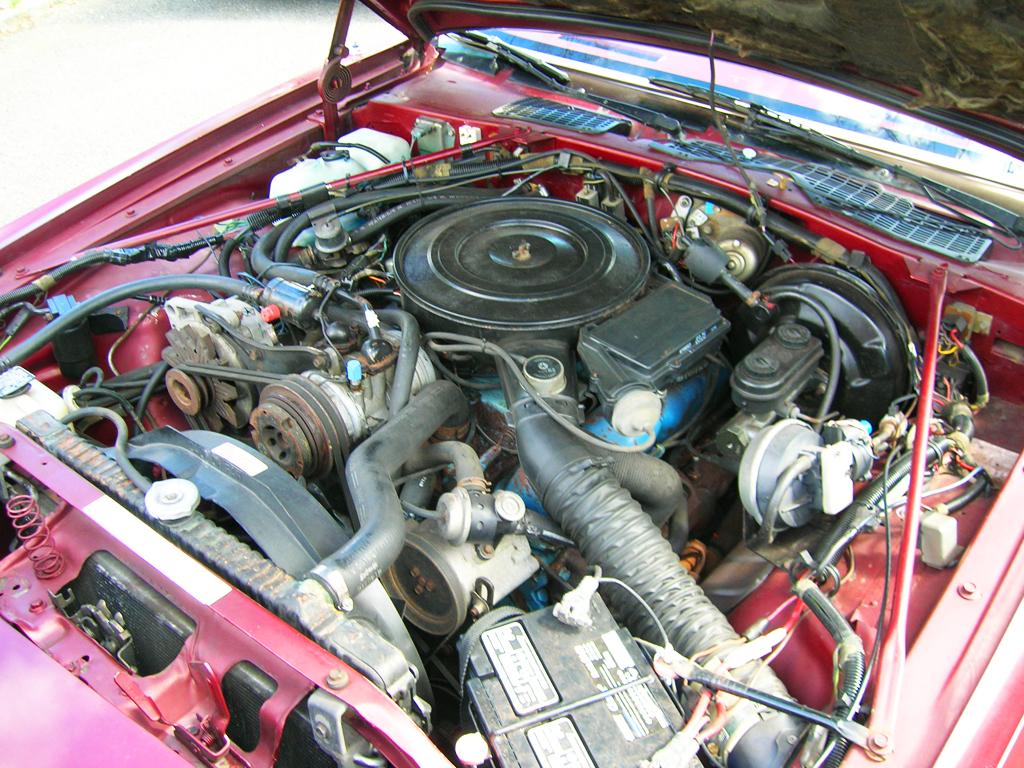Originally Posted By: supton
Originally Posted By: DoubleWasp
I'm skeptical for a few reasons:
1. No performance data......at all.
2. How do you give "Ram Air" to a turbocharged engine? Isn't the high-speed turbine doing enough of the air-ramming all of its own?
3. What is allegedly going on in that truck's fender that the air coming in from there is heated, unlike the hood scoop air?
4. How does ram air work, when you have a 180 degree turn to create an intentional air-stall?
5. How does ram air work when you having a gaping opening in the fender, ready to bypass any excess air forced into the airbox?
6. How exactly is there so large a difference between ambient air temperature and this superheated air from the fender that the engine is supposed to run cooler? WHat happened to the radiator and transmission cooler? We don't design those to regulate engine and transmission temps anymore?
Last but not least:
This is a turbocharged engine. The air coming into the filter box is going to be compressed and superheated by the turbocharger. Intercooler design is going to play the largest factor in ultimate IAT's.
I'm throwing up the Bravo-Sierra Flag on this one. Obviously a case where they called in the engineers to help make tangible function of something they so clearly added for purely styling purposes.
My two thoughts: they seem to be very interested in dry air also. I'm not sure why. But if they could remove moisture from moist air then they could have the same kind of air going into the engine under all conditions (humid or dry), leading to more consistent engine performance. Alternatively, seems to me that in order to heat up moisture you "steal" from the combustion heat.
Also, wasn't there an issue for Ford Ecoboost owners with condensation buildup in their intercoolers? I think I heard about VW TDi's having it also. Hydrolock is a very bad thing.
Finally, while the intercooler is meant to drop intake temps, it seems like there is only so much it can do. Under the most demanding conditions perhaps they couldn't size the IC large enough. Thus, if they could eek out a few more degrees of drop in the hood, perhaps that helps.
Dunno. The ram air effect on the engine does sound like marketing. I know under load the engine is moving some air, but the turbo is supposed to be doing all that work (and for free).
I think they are over compensating a bit I'm driving home the message that the intake will not be guzzling water from rain or mist.
I must admit that my eyes would pop a little bit if I were watching a ram air scoop just swallow up water during a torrent.
Originally Posted By: DoubleWasp
I'm skeptical for a few reasons:
1. No performance data......at all.
2. How do you give "Ram Air" to a turbocharged engine? Isn't the high-speed turbine doing enough of the air-ramming all of its own?
3. What is allegedly going on in that truck's fender that the air coming in from there is heated, unlike the hood scoop air?
4. How does ram air work, when you have a 180 degree turn to create an intentional air-stall?
5. How does ram air work when you having a gaping opening in the fender, ready to bypass any excess air forced into the airbox?
6. How exactly is there so large a difference between ambient air temperature and this superheated air from the fender that the engine is supposed to run cooler? WHat happened to the radiator and transmission cooler? We don't design those to regulate engine and transmission temps anymore?
Last but not least:
This is a turbocharged engine. The air coming into the filter box is going to be compressed and superheated by the turbocharger. Intercooler design is going to play the largest factor in ultimate IAT's.
I'm throwing up the Bravo-Sierra Flag on this one. Obviously a case where they called in the engineers to help make tangible function of something they so clearly added for purely styling purposes.
My two thoughts: they seem to be very interested in dry air also. I'm not sure why. But if they could remove moisture from moist air then they could have the same kind of air going into the engine under all conditions (humid or dry), leading to more consistent engine performance. Alternatively, seems to me that in order to heat up moisture you "steal" from the combustion heat.
Also, wasn't there an issue for Ford Ecoboost owners with condensation buildup in their intercoolers? I think I heard about VW TDi's having it also. Hydrolock is a very bad thing.
Finally, while the intercooler is meant to drop intake temps, it seems like there is only so much it can do. Under the most demanding conditions perhaps they couldn't size the IC large enough. Thus, if they could eek out a few more degrees of drop in the hood, perhaps that helps.
Dunno. The ram air effect on the engine does sound like marketing. I know under load the engine is moving some air, but the turbo is supposed to be doing all that work (and for free).
I think they are over compensating a bit I'm driving home the message that the intake will not be guzzling water from rain or mist.
I must admit that my eyes would pop a little bit if I were watching a ram air scoop just swallow up water during a torrent.

